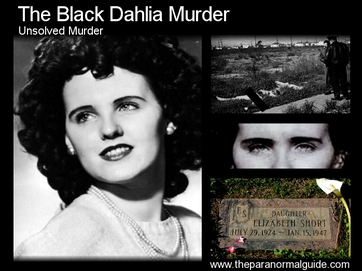
Although there have been many suspects, the crime, known as the 'Black Dahlia Murder', is still unsolved.
(Warning: Some content may disturb)
Elizabeth Short
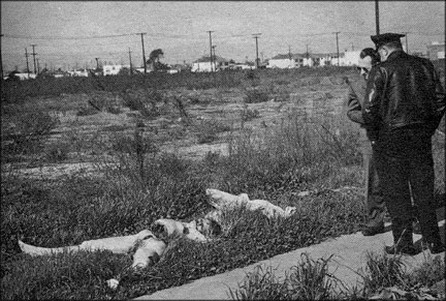 The body is discovered.
The body is discovered. Born in Boston, Massachusetts, Short was one of five daughters to Cleo Short and Phoebe Sawyer. Short's father’s occupation was building miniature golf courses, but with the financial crash in 1929, Cleo lost his job. Unable to provide for his family, he left, his car discovered next to a bridge soon after.
The family moved into a small apartment in the city of Medford, where the mother had found work. However, due to Short's asthma and the cold winter months in Medford, Short would spend those colder months in the much warmer Miami, California.
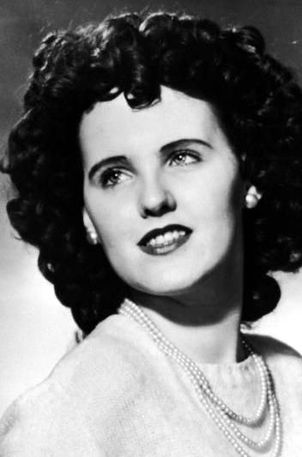 Elizabeth Short.
Elizabeth Short. It was at this time Short fell in love with the cinema and actresses of the time. She knew what her life path was aimed to be.
Short had a few minor run-ins with the law, such as under-age drinking, and as she no longer lived with her father, due to an unresolved altercation, the juvenile authorities sent her back to live with her mother.
However, Short had fallen in love with Los Angeles, and her dream of wanting to become an actress, so she was soon back there and had several relationships with servicemen. In July 1946, she was spending a lot of time in Los Angeles moving from hotel to hotel and friend to friend.
She wanted to become famous.
Within the next six months she would become nationally and internationally known, but not for reasons she could foresee or want.
The Black Dahlia
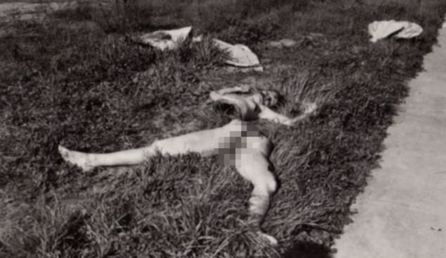 The site that greeted Betty Bersinger while out walking.
The site that greeted Betty Bersinger while out walking. She had discovered the body of Elizabeth Short, cut in two at the waist, the body bruised and mutilated.
When investigators arrived on the scene, a fuller picture was gained.
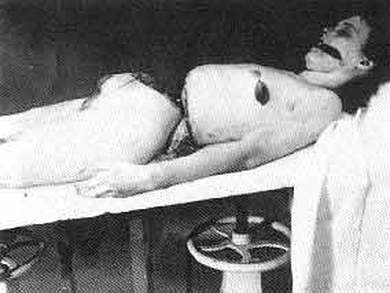 Short was cut completely in two.
Short was cut completely in two. Multiple cuts and bruises were found about the body, especially on her thighs and breasts, and in places entire pieces of skin and flesh had been removed.
Her mouth had been sliced from the corners to out towards the ears.
The cause of death was reported as the shock from blows given to the head, followed by the heavy bleeding caused by the slicing of her face.
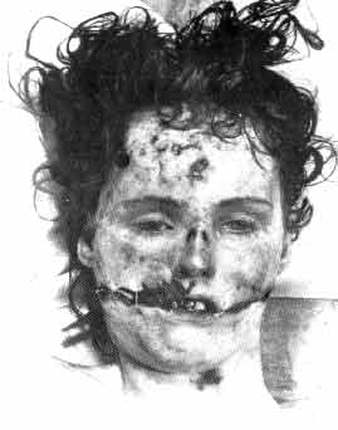 Shorts' face was heavily mutilated.
Shorts' face was heavily mutilated. The crime soon became national headlines, and in the way newspapers like to do, the embellished stories gave the case a catchy name, 'The Black Dahlia', due to her jet black hair, her frequent dressing in dark clothes, and the Dahlia she sometimes wore in her hair. This was a name Short apparently was sometimes known by (though there are many claims it only came to be after her death), but soon it became much more well known than her real name.
Within a small space of time many people, reportedly up to 50, confessed to the crime. However, not all calls or letters to the police turned out to be false. About a week after the body was discovered an anonymous person rang up the Los Angeles Examiner newspaper claiming to be the killer and offering up some of Short's possessions.
The following day a package arrived containing her birth certificate, photographs, and pieces of paper with names written on them, as well as an address book with the name Mark Hansen.
The investigators followed up many leads on suspects, including Mark Hansen, a Hollywood nightclub owner. Practically every person who knew Elizabeth Short was treated as a suspect until they could be eliminated. Hundreds of officers interviewed thousands of people who had been in contact with Short, or knew people who had.
Eventually the suspects were weaned down to 25, but in the end, nothing stuck. The case was never solved. Due to the notoriety of the event many authors, retired investigators and amateur detectives have all pointed out different people they believe to be the killer, including such people as Orson Welles (actor, writer, producer and director), Woody Guthrie (folk singer), Robert Manley (last person seen with Short) and someone known simply as the 'Queer Woman surgeon'.
A Prime Suspect
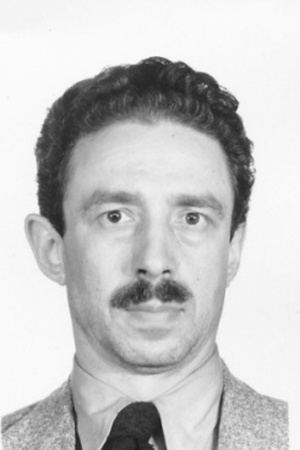 Dr Hodel was a prime suspect (and still is)
Dr Hodel was a prime suspect (and still is) The dog was taken to the cellar of a house belonging to Dr George Hodel, one of the principal suspects in the case. Hodel was under scrutiny after his 14 year old daughter made accusations that he had sexually molested her. Hodel was acquitted of the charges, but was soon added as a suspect in the Black Dahlia case.
Investigators placed Hodel under surveillance for a month in 1950, and taped him making several incriminating statements such as "Supposin' I did kill the Black Dahlia. They couldn't prove it now. They can't talk to my secretary anymore because she's dead.... They thought there was something fishy. Anyway, now they may have figured it out. Killed her. Maybe I did kill my secretary...."
Hodels secretary died in 1945, Hodel was present and had been caught burning papers when police arrived. Once again the charges were dropped, and many believe this was due to Hodel's high society contacts. The motive for the murder that Hodel was accused of was his secretary was about to testify that Hodel was overcharging clients and prescribing medication and tests that were not needed, as he was misdiagnosing them for profit.
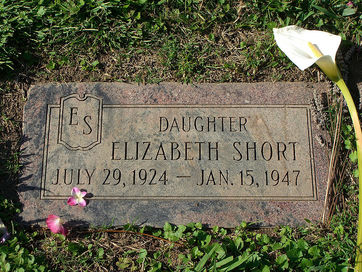 Elizabeth Shorts' headstone.
Elizabeth Shorts' headstone. Elizabeth Short is buried in Mountain View Cemetery, Oakland, California.
This piece only just begins to touch the surface of the crime and suspects, and much, much more can be found if you search for it, including the full list of suspects and why they are so, crime scene photos, interviews with investigators and full autopsy details. It all makes for very intriguing read.
Join the Discussion Below!
Let us know your thoughts, comments and theories below!
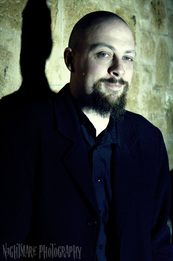
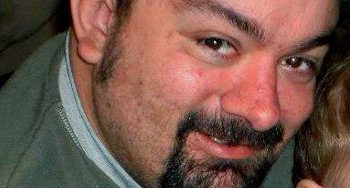


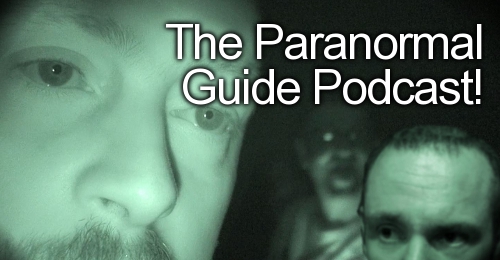
 RSS Feed
RSS Feed
